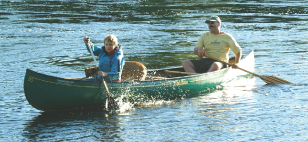29
Orthodontic anchorage
INTRODUCTION
Orthodontics involves moving teeth from positions of malalignment into alignment. This requires the application of a force through an archwire, an elastic or a spring. Unless the orthodontist is using a screw or plate attached to the jaw bone (see Chapter 30), the force used to move the tooth is applied from other teeth within the same or opposite arch. These teeth may be in the correct position and therefore the orthodontist will not want them to move. Anchorage is the term used by orthodontists to describe the process of ensuring that desirable tooth movements occur and undesirable tooth movements, in all three dimensions, are prevented. In brief, it is the control of unwanted tooth movement.
No discussion of orthodontic anchorage is complete without mentioning Newton’s third law of motion. It is also known as the law of reciprocal action or as summarised by Newton ‘Every action has an equal and opposite reaction’. An example of Newton’s third law of motion is that of a canoe being propelled forward by the backward force of paddling (Figure 29.1).
Figure 29.1 Newton’s third law of motion in action. The canoe is being propelled forward by the backward force of the paddling.

When a force of sufficient size and duration is applied to a tooth it will generally move in the direction of the force, unless steps are taken to prevent it. Early studies suggested that the rate of tooth movement was associated with the size of the force applied and the surface area of the root of the tooth.1–6 Partly as a result of these studies, clinicians have undertaken various steps in order to prevent the anchor teeth from moving, also known as conserving anchorage. These include:
- Involving as many teeth in the anchorage unit as possible to distribute the force over a larger root surface area
- Only moving one tooth at a time per quadrant
- Using a light force sufficient to move the tooth, but not large enough to move the anchor unit.
Recent work carried out under more controlled conditions has cast doubt on this approach to anchorage conservation. Pilon et al.,7 working with experimental dogs, found no difference in the mesial movement of the anchorage unit between three different clinically relevant forces. The authors suggest that the individual’s biological response to the force was a more significant factor in determining the rate of tooth movement than was the size or duration of the force. Ren et al.8 combined the data from several animal studies to produce a mathematical model to describe the relationship between force magnitude and the rate of tooth movement, which they then tested on data from clinical research. They concluded that there are insufficient data to determine whether there is a threshold of force below which tooth movement does not occur. They also identified a wide range of forces (104–454 cN) over which the maximum rate of movement could be achieved.
It would therefore appear that the traditional clinical approaches to anchorage conservation might not be as reliable as was once thought and the orthodontist should consider alternative means of reinforcing anchorage when required, in order to achieve the best treatment results.
ANCHORAGE IN CLASS I CASES
The anchorage requirements in a patient with a Class I malocclusion will depend on the exact cause of the malocclusion. If a patient with crowded arches has space created by the extraction of premolars, then after alignment of the teeth it is usually sufficient to close any residual extraction spaces by equal movement of both anterior and posterior teeth. This equal movement of teeth on either side of the force is sometimes known as reciprocal anchorage (Figure 29.2). In cases where vertical movements are required, for example with an ectopic canine, vertical reinforcement of anchorage may be required (Figure 29.3). This might involve the use of a transpalatal arch (TPA) attached to bands on the upper first molars (Figure 29.4). Some clinicians use an upper removable appliance, with acrylic palatal coverage for additional vertical anchorage support.
Stay updated, free dental videos. Join our Telegram channel

VIDEdental - Online dental courses


